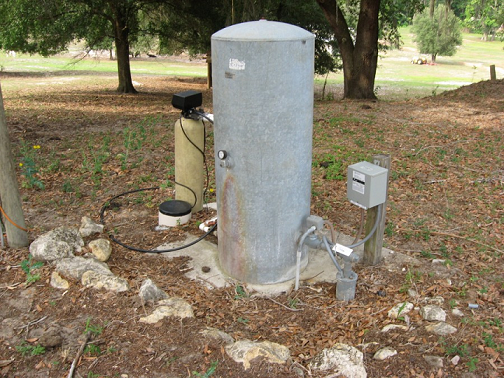Para acceder a esta comunicación en español, por favor utilice este enlace
Hurricanes are one of nature’s most powerful storms. They produce strong winds, storm surge flooding, and heavy rainfall. When heavy rains bring flooding to an area, people don’t often think about the damage caused to their private drinking wells. If your well has been flooded, such as your well head was surrounded by flood waters or it was submerged in flood waters, your private well might be in danger of contamination from pollutants found in the flood waters.

Is My Water Safe?
The only way to know if you water is safe to drink or not is to have it tested. Bacterial contamination is common after a well is flooded. Find a certified lab to test your water for bacteria (coliform bacteria and E.coli). The Environmental Laboratory Certification Program was established in 1979 to ensure laboratory quality and capacity to perform testing of drinking water regulated in the Florida Safe Drinking Water Act. You can assess this link to find a certified drinking water testing lab.
Before you receive your water test result, you need to use alternative safe water sources for drinking, making beverages, cooking, brushing your teeth, washing dishes, and washing areas of the skin that have been cut or injured. Bottled water can be used for these purposes. You can also bring your well water to a rolling boil for at least one minute to kill bacteria.
What To Do After The Lab Confirms Bacterial Contamination In My Well Water?
If the test reveals bacteria, the well and water system need to be disinfected. Non-scent chlorine bleach is often used to disinfect a bacterial contaminated well. Keep in mind, the disinfection process includes not only your well but also all the plumbing. If you have water treatment systems or devices, remove all membranes, cartridges, and filters, and replace them after the shock chlorination process is completed.

How To Disinfect My Well?
- Pump out the well to remove any potential contaminants. It is at least three well volumes of water from a faucet near the wellhead, or at a minimum, pump the well for at least 1 hour before beginning the disinfection process.
- Flush out household plumbing including water heater. Make sure the water is clear and free of sediment.
- Turn off electric power to the pump and remove the well cap. Prepare a solution of bleach and water, and pour the solution into the top of the well. The amount of bleach depends on the depth of water in the well and the diameter of the well casing (Table 1). The bleach should be diluted with 10 parts of water. For example, 1 cup of bleach with 10 cups of water before pouring it into your wells.
- Recirculate the water by connecting a hose to a faucet and spraying the water back into the well for at least 10 minutes.
- Open every faucet in the system and let the water run until the smell of chlorine can be detected. Then close all the faucets and seal the top of the well.
- Allow the chlorinated water to stand in the system for at least 12 hours but no longer than 24 hours. You cannot use any water through the system during this period including flushing your toilets. Prepare alternative water supply during well disinfection process.
- The next day, operate the pump by turning on all faucets, beginning with outside and flushing out the water until there is no chlorine odor.
Table 1. The Amount of Chlorine Bleach to Use for Well Disinfection
|
Well Depth in Feet |
Well Diameter in Inch | |||
|
2” |
4” |
5” |
6” |
|
|
50 |
1 cup | 2 cups | 2 cups | 3 cups |
|
80 |
1 cup | 2 cups | 4 cups | 4 cups |
|
100 |
1 cup |
3 cups |
4 cups |
6 cups |
|
150 |
2 cups | 4 cups | 8 cups |
10 cups |
| 200 | 3 cups | 6 cups | 10 cups |
12 cups |
*Table 1 is adapted from Florida Department of Health publication “What Should I Do If My Well Is Flooded?”
Is My Water Safe Now?
Again, the only way to verify that the water is safe to drink is to have it tested. Send another sample to the certified lab to confirm there is no bacteria in your well water first. Although chlorine bleach is effective against microorganisms, it will not remove chemical contamination that may have gotten into your well.
For more disaster recovery tips, go to disaster.ifas.ufl.edu.
 0
0
